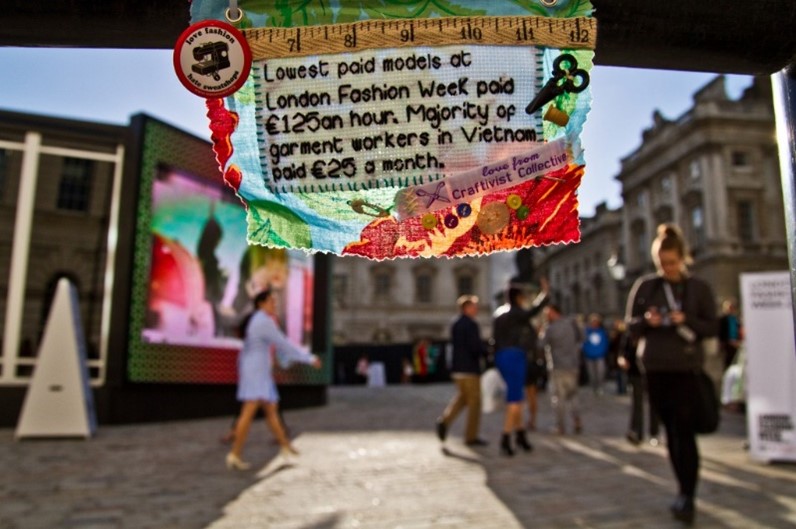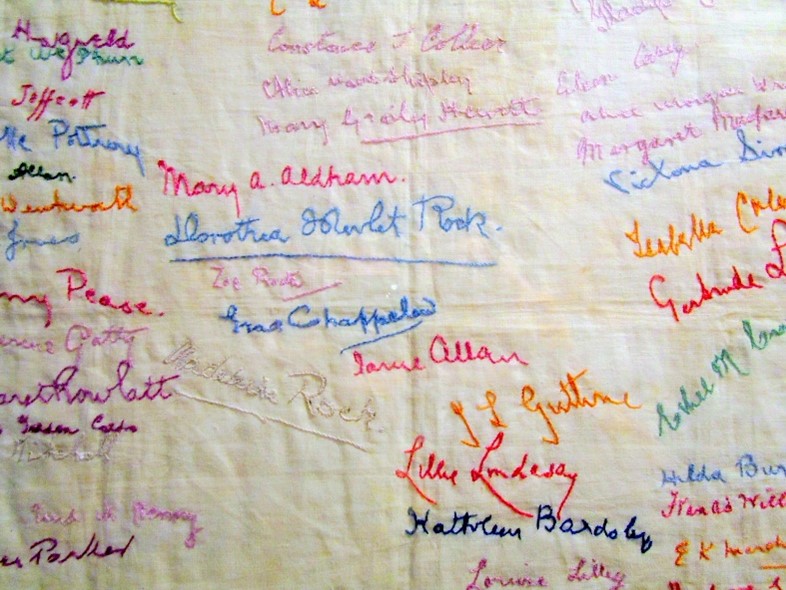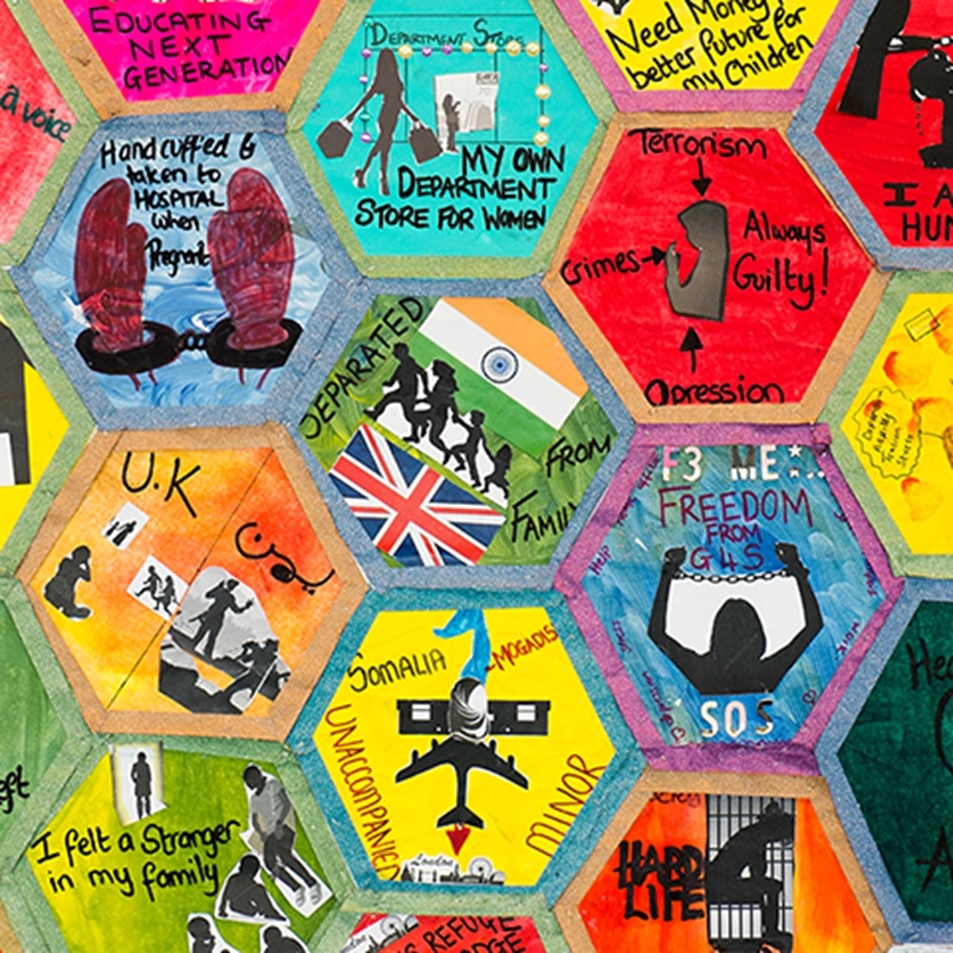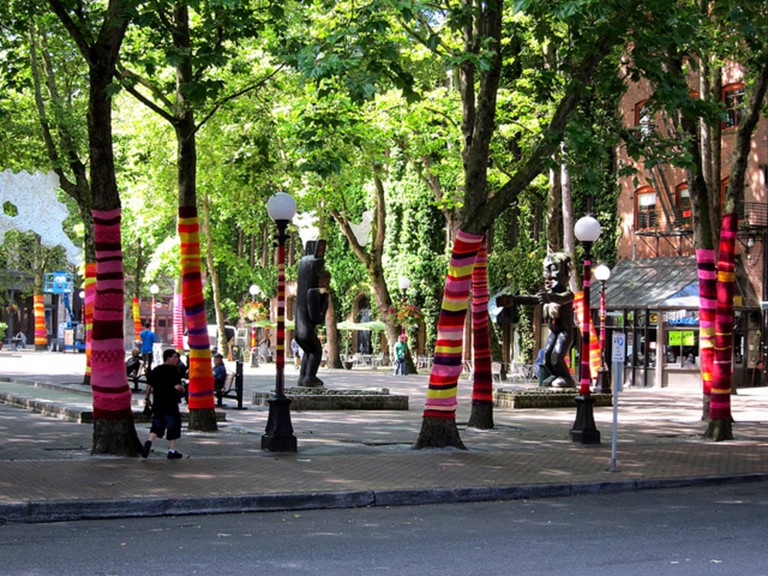The history of art had always designated a separate spot for craft- knitting, crocheting, embroidering, and others were simply not considered a part of the fine arts like painting or sculpture. Extremely handy and closely associated with generations of women’s household labour, these forms of creation have been disregarded as secondary forms of art- never great enough for the school of fine artists. Recent years, however, have shown a renewed interest in these forms of art and along with it comes a demand for respect as well as the identification of its unique women-led histories. Crafting has also taken up new identities- one being its very impactful role in activism or as popularly known, ‘craftivism’.
What is ‘Craftivism’?
A term coined by Betty Greer in 2003, it joins ‘craft’ and ‘activism’ to devise a new form of protesting- one that uses craft and prioritises slow, compassionate change. Now a global phenomenon, the craftivist movement has enacted change in the sector of human rights, allowing the spread of marginalised stories and even staging widespread protests- peacefully. Significantly, the movement has had massive participation from women, and they have reclaimed the art form and its rightful position as a phenomenal source of narrating human stories. A skill that was severely undervalued in patriarchal societies now has the opportunity to influence tremendous change. The movement has branched out to not just include stitching and embroidery, but also large projects like yarnbombing.

Source: Craftivist Collective
The History of Craftivism
Strongly related to the women’s rights movements, the earliest example of craftivism is often noted to be the ‘Suffragette Handkerchief’. The piece of cloth had the names of twenty-six women arrested for demanding the right to vote in Holloway in 1912. Their embroidered signatures were made while in prison, an image notably very far from that of domestic femininity that the act is commonly associated with, according to Selvedge.

Source: Selvedge
The Indian Independence Movement too, has instances of craftivism strewn all across its history. Most significantly, the spinning of Khadi as an alternative to British textiles marked resistance and the wider community effort that surrounded this mode of protest.
Craftivism has also had a history of combatting fast fashion and consumerism that began at the time of the Industrial Revolution. The growth of the Arts and Crafts movement in England that later spread to various parts of Europe was an effort to prevent the loss of employment for traditional craftsmen. The Cotswolds School gathered artists and they preserved traditional furniture-making techniques among others, craftsmen’s guilds were also popular. This movement is said to have grown into the Nouveau Art Movement in France in the later years.
Throughout history, thus, craftivism has not just been a mode of protest, but also a means of responding to systems that prioritised profit over people. Craftivism maintains its stance even today, opting to speak out against exploitative capitalism through various campaigns. The Nike Blanket Petition that took place in the early 2000s is one of many such instances. Here, artists represented people from around 30 countries who protested against the poor working conditions of the labourers under the brand. They stitched together knitting squares from around the globe to create a blanket with Nike’s logo, which was then exhibited at various locations.
Craftivism Today: The Craftivist Collective and Other Campaigners
Craftivism, according to most influential artists in the field, is a gentle, thoughtful form of protest. The work takes hours of painstaking effort and seeks to influence without conflict or destruction of property. The Craftivist Collective, set up by Sarah Corbett, embodies these values as they use craft to sway opinion and enact protest. The collective includes artists, teachers, grandparents, and many others involved in the process and participating in workshops.
An important campaign led by the Craftivist Collective concerned the Marks and Spencer Group. In an attempt to secure wages above the minimum living wage for 50,000 of its employees, the collective embroidered handkerchiefs with positive slogans for each of the board members. Every artist involved was paired with a member of the board with whom they shared a similarity- in interests or living circumstances. The messages, including ones like “Being good is good for business”, ultimately led to the company issuing fair wages within ten months of the campaign. Additionally, The Origami Migration Campaign led by the World Wildlife Fund employed the ‘gentle protest’ method of the collective to successfully protect migrating birds and their habitats from dredging.

Source: Nest Creative Spaces
In Birmingham, activist Salma Zulfiqar engaged fifteen women in the process of creating a quilt together. Called the “Migration Blanket”, the piece involved panels made by each of the participants regarding their ambitions and aspirations for the future as refugees and migrant women. A tremendous show of solidarity and portrayal of very real hardships, the work went on to be displayed at the Venice Biennale.

Source: Salma Zulfiqar
Craftivism made global headlines once again in 2016 when the Women’s March in Washington D.C. was swathed in pink as part of the Pussyhat Project. Created by Jayna Zweiman and Krista Suh, the project involved women, men, members of the LGBTQIA+ community and children, all wearing handmade, knitted pink caps with cat ears. A show of solidarity for women’s issues and a response to negative comments made by the Trump administration on women’s bodies- the movement was picked up within a short span across many borders, though its inclusivity was later questioned.

Source: Philadelphia Inquirer
Craftivism: The Indian Take
Examples of Craftivism and vocal movements involving artisans are plenty in the Indian context too. They may not be the most conventional instances but stay true to the principles of the movement. The farmers’ protest of 2021, saw women from the neighbouring village of Longowal prepare 50 cots in a span of two days to help protestors face the rising summer heat. The skilled labour of the women contributed hand-knit, durable cots among other things to the project.

Source: Felt Magnet
Yarnbombing, a form of craftivism involving wrapping objects in bright yarn to add joy to public spaces or to make a political statement, has also been seen in India. Delhi-based artists Pankaj Saroj and Rahul Chaudhary began yarnbombing public spaces, rickshaws and shops as a form of reflecting ‘community ties’. When left without money, they were offered assistance by the people around them, thus, this was their way of giving back. Initially surprised, soon enough, people were excited to have their spaces decorated for aesthetic value and to attract customers. It is the very same idea of adding warmth and colour to shared spaces that have made yarnbombing popular in the U.S.A, U.K. and Australia.
Craftivism is a quiet revolution that is inclusive, creative, and powerful. The movement has had roots centuries back in most cultures, including that of India but the political impact is being felt more extensively than ever before. A reclaimed art form, with women at the forefront, this mode of protest is unique from many others- there is no denying, however, of its power. The vast potential of the movement lies not only in its gentle but firm influence but also in its encouragement of new forms of resistance that society may not have been familiar with prior.
SOURCES:
- nestcreativespaces.co.uk: craftivism how gentle protest is helping the world one stitch at a time
- The Guardian: craftivism protest women’s march Donald Trump
- The Collector: industrial revolution arts and crafts
- Selvedge.org: prison embroidery by suffragettes
- pussyhatproject.com
- Times of India: ground at protest too got women from punjab village send 50 cots to tikri life farmers up
- www.hindustantimes.com yarn bombing using the fine art of knitting and wrapping yarn for a cause

Contributor




